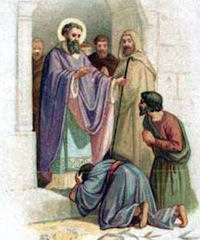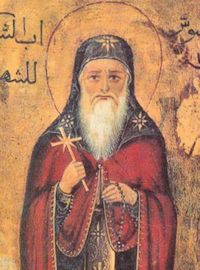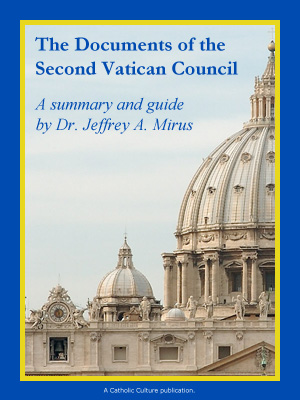Easter: May 9th
Saturday of the Fourth Week of Easter
Other Commemorations: St. Pachomius, Abbot (RM)
» Enjoy our Liturgical Seasons series of e-books!
According to the 1962 Missal of St. John XXIII the Extraordinary Form of the Roman Rite, today is the feast of St. Gregory Nazianzen. He was educated at Athens in all the sciences with St. Basil the Great. He became bishop of Nazianzen and his profound knowledge earned for him the title of Doctor and Theologian, titles confirmed by the Church. He died in 389. His feast in the Ordinary Form of the Roman Rite is celebrated January 2.
Historically today is the feast of St. Pachomius, founder of the cenobitical life, born near Esneh, Egypt; died at Phebôou c.346. After spending some time with the hermit Palemon, he withdrew to Tabennisi where he introduced community life among the hermits who gathered around him. Before he died he had established nine monasteries for men and two for women. His order continued until the 11th century. Represented in hermit's garb, or crossing the Nile on the back of a crocodile.
St. Pachomius
 St. Pachomius can justifiably be called the founder of cenobitic monasticism (monks who live in community). Even though St. Antony the Great was the first to go into the desert to live a life of seclusion pursuing evangelical perfection, he lived an eremitic life, that is, a primarily solitary life.
St. Pachomius can justifiably be called the founder of cenobitic monasticism (monks who live in community). Even though St. Antony the Great was the first to go into the desert to live a life of seclusion pursuing evangelical perfection, he lived an eremitic life, that is, a primarily solitary life.
Pachomius first started out as a hermit in the desert like many of the other men and women in the third and fourth centuries who sought the most radical expression of Christian life and he developed a very strong bond of friendship with the hermit Palemon. One day he had a vision during prayer in which he was called to build a monastery, and was told in the vision that many people who are eager to live an ascetic life in the desert, but are not inclined to the solitude of the hermit, will come and join him. His hermit friend Palemon helped him to build the monastery and Pachomius insisted that his cenobites were to aspire to the austerity of the hermits.
However, he knew that his idea was a radical one, in that most of the men who came to live in his monastery had only ever conceived of the eremitic lifestyle; his great accomplishment was to reconcile this desire for austere perfection with an openness to fulfilling the mundane requirements of community life as an expression of Christian love and service. He spent most of his first years as a cenobitic doing all the menial work on his own, knowing that his brother monks needed to be gently inducted into serving their brothers in the same manner. He therefore allowed them to devote all their time to spiritual exercises in those first years. At his death, there were eleven Pachomian monasteries, nine for men and two for women.
The rule that Pachomius drew up was said to have been dictated to him by an angel, and it is this rule that both St. Benedict in the west and St. Basil in the east drew upon to develop their better known rules of cenobitic life.
— Catholic News Agency
Highlights and Things to Do:
- Read more about St. Pachomius:
- St. Pachomius is considered to be the father of cenobitic monasticism. What does cenobitic even mean? The first type monastic living was the life of a hermit, living solitarily, called eremitic. Cenobitic monasticism emphasizes community life. In Western monasticism the cenobitic monks join in a community of a religious order, regulated by a religious rule, a collection of precepts. St. Augustine and St. Benedict followed the example set by Pachomius for their religious orders.








